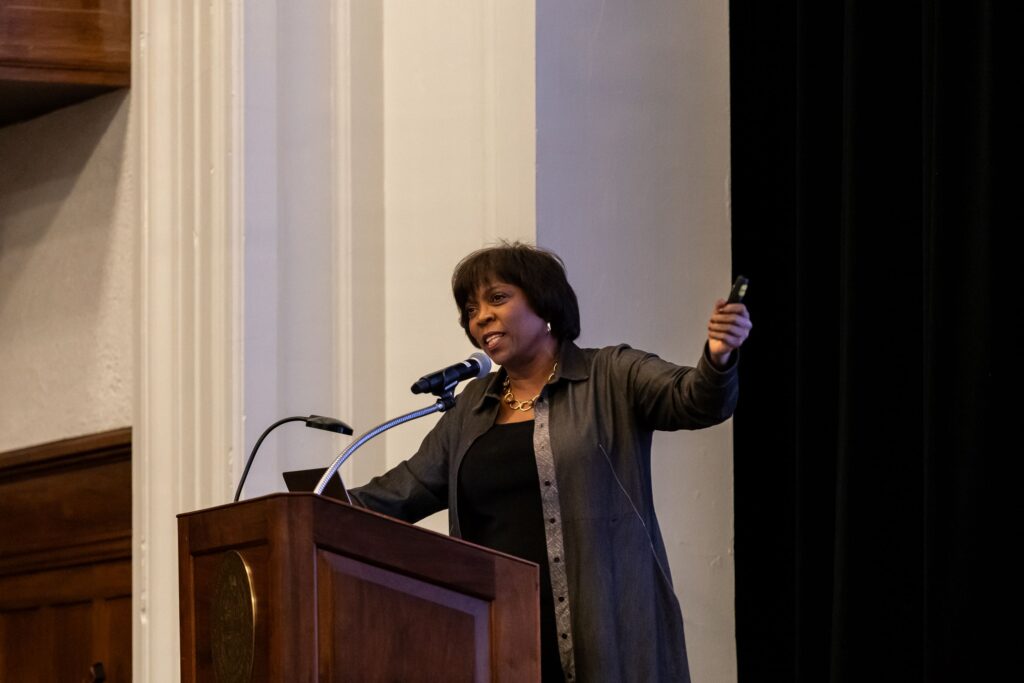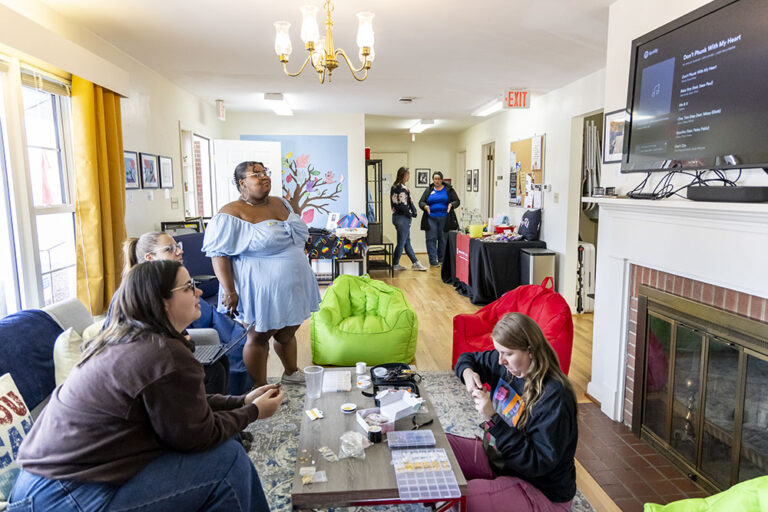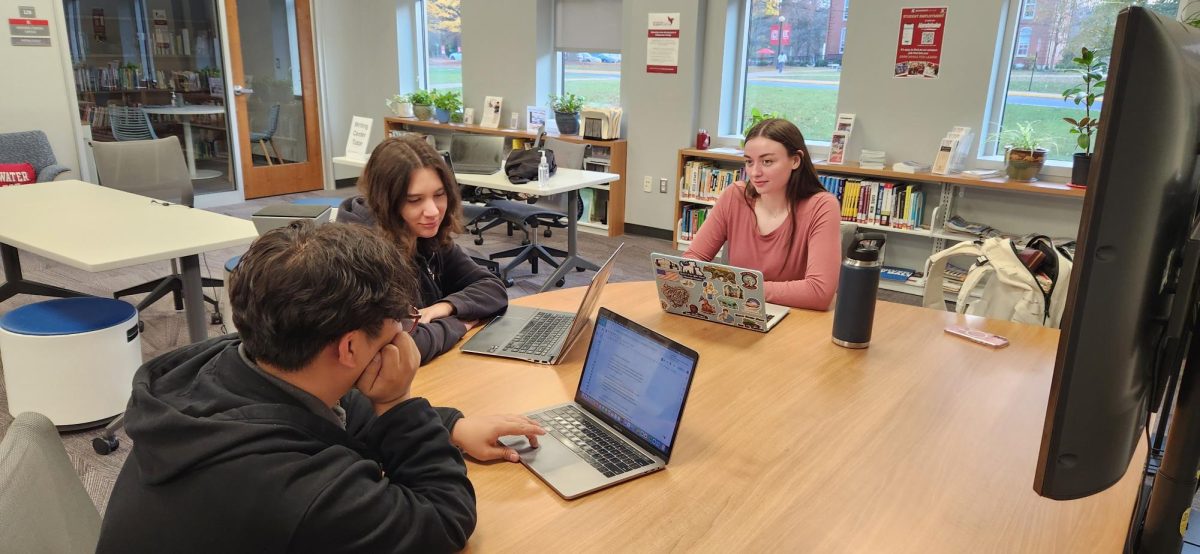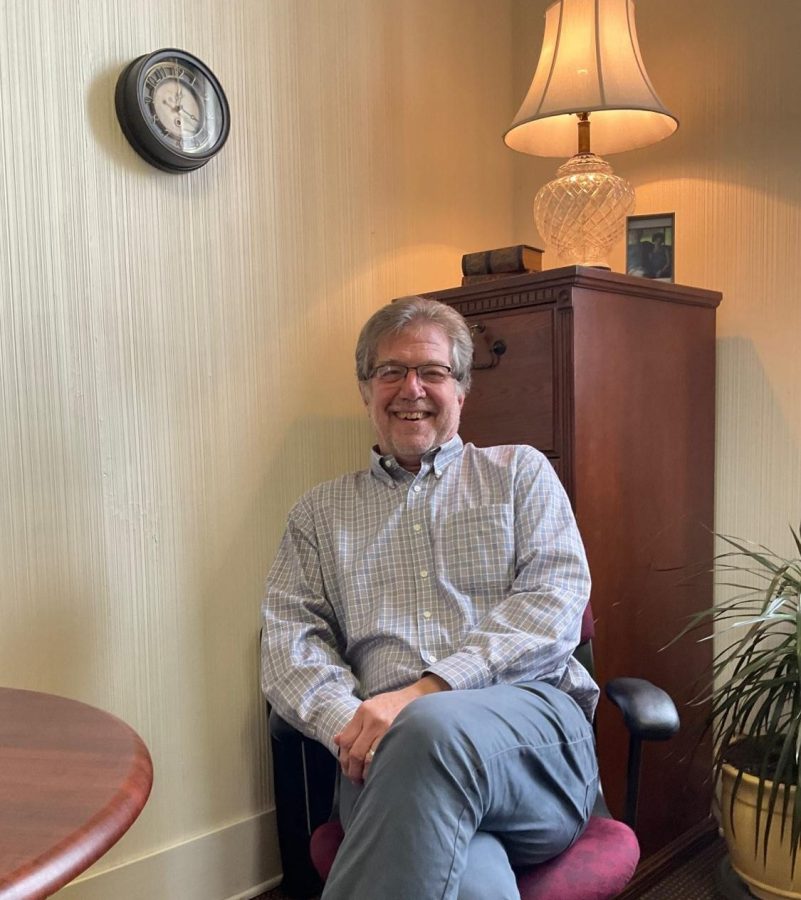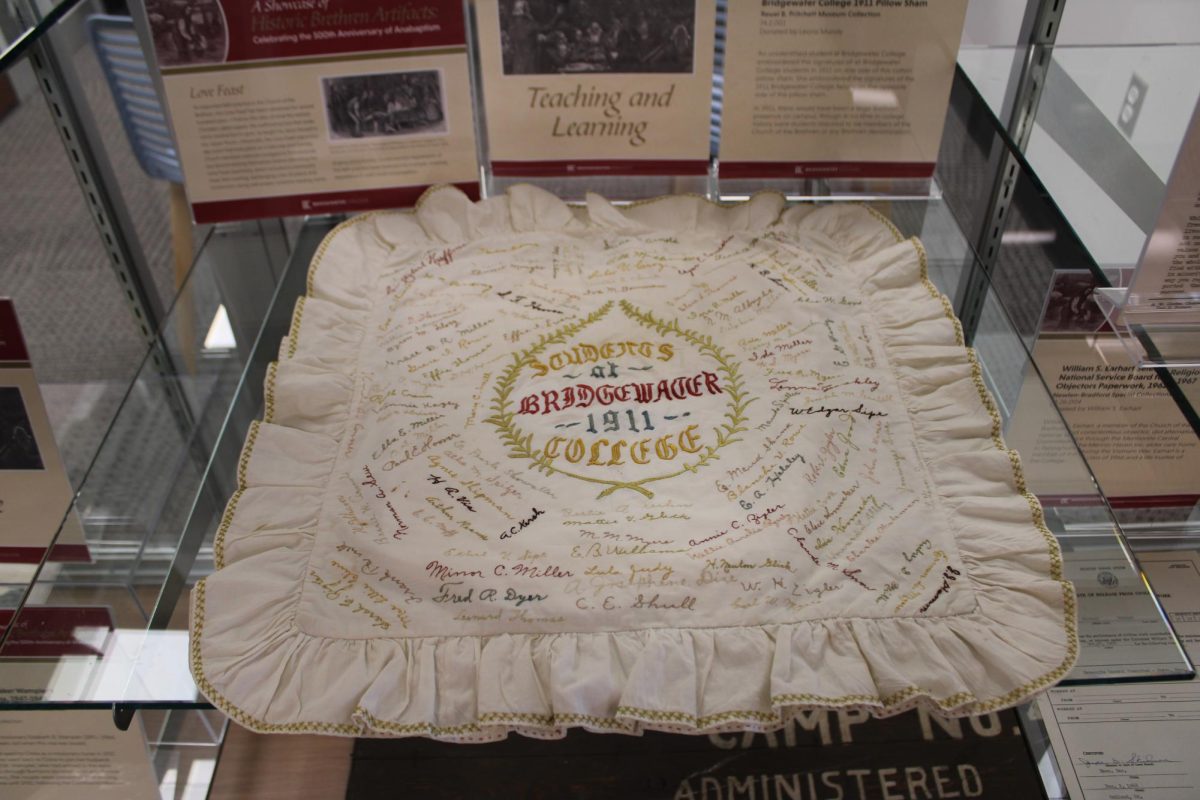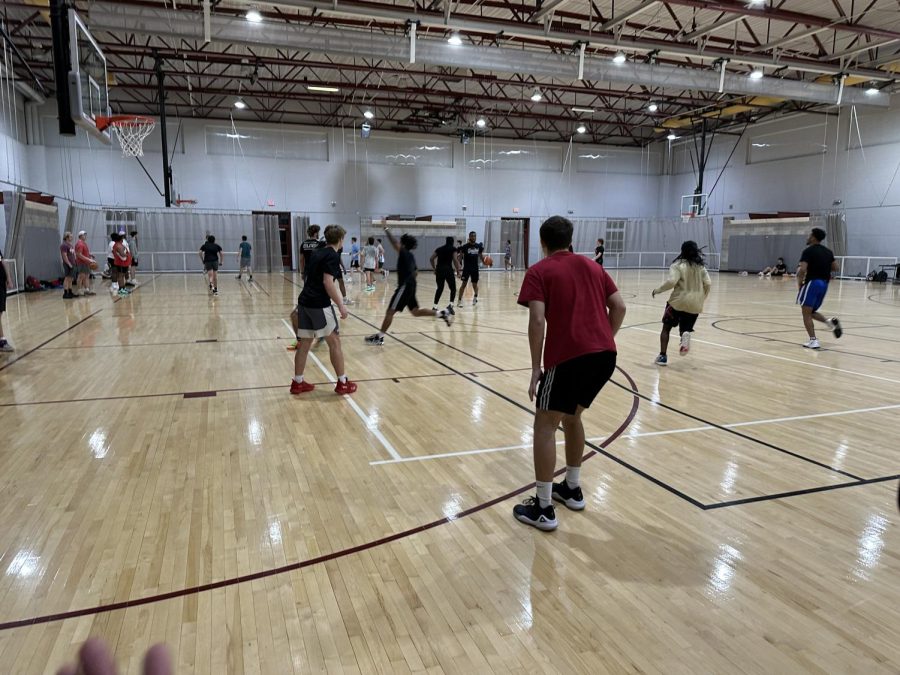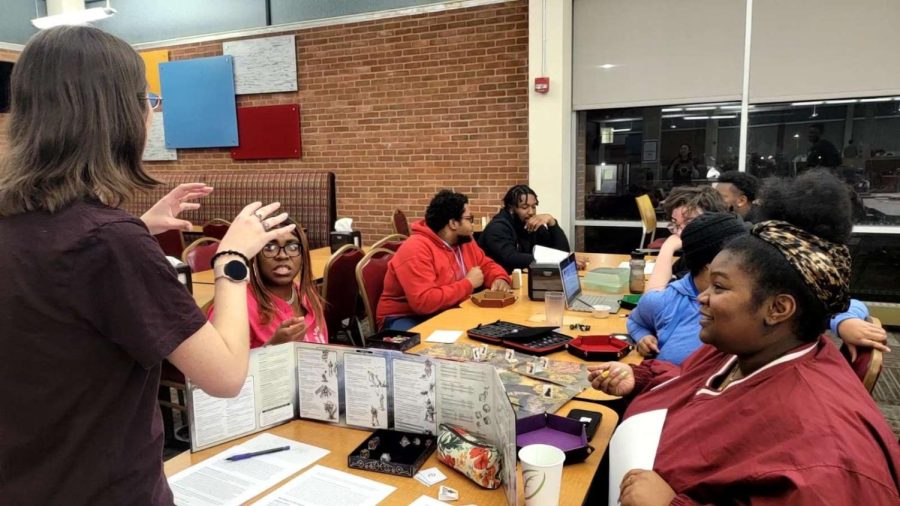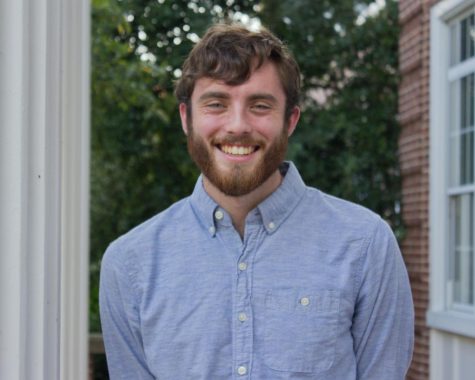Anxiety Disorders
Yes, we all feel it.
January 29, 2018
Bridgewater, Va. — While some may be affected more than others, everyone experiences anxiety.
We all have moments where we become scared, worrisome, or fearful. Paying for college, making decisions involving relationships, even completing schoolwork can cause people to feel anxious, and even cause a panic attack. Yet for people with anxiety disorders, these feelings and situations are magnified to where they become all-encompassing; it is all they know.
For a moment, think about how it would feel to not be able to move because you are so scared. This is what living with an anxiety disorder can feel like.
An anxiety disorder is an excessive and irrational dread or fear of everyday situations, and some examples of this are getting out of bed to face the day, going to class or somewhere public and crowded, or even having a conversation with someone who is a stranger. It can also be defined as a disability to do something because of fear, and this means that it interferes with daily activities.
An anxiety disorder is characterized by constant worry, the avoidance of social situations from the fear of judgement, embarrassment, and humiliation. Anxiety disorders also involve having a panic attack because a person is afraid of having one to begin with, as well as an irrational fear or avoidance of an object, place, or  situation that poses no danger or threat. The final sign of an anxiety disorder is recurring nightmares, or flashbacks that are related to a traumatic event that occurred several months or years before.
situation that poses no danger or threat. The final sign of an anxiety disorder is recurring nightmares, or flashbacks that are related to a traumatic event that occurred several months or years before.
In regard to “Everyday Anxiety,” this side of the chart deals with worry about everyday life decisions, embarrassment in awkward social situations, and a feeling of nervousness before a significant event. It is also categorized by realistic fears and sadness or difficulty sleeping after a traumatic event. Some examples of this are driving in heavy traffic and speaking in front of people.
As evidenced by the chart, there are many causes and triggers for an anxiety disorder, with most of them being a stress or trauma related incident. A common way that anxiety becomes prevalent in life is through a stressful situation or environment that one lives in.
Anxiety disorders are the most common psychiatric illnesses in America, with 44 million adults suffering from them. Out of this 44 million, one-third receive proper treatment. Since most symptoms develop before the age of 21, many children and teenagers are diagnosed with an anxiety disorder. Eight percent of people under the age of 18 are living with an anxiety disorder. This type of disorder can run in families, much like diabetes.
There are numerous subcategories of anxiety disorders, which affect people in different ways. There are General Anxiety Disorders, which combine the multiple symptoms I have discussed. There are also panic disorders, which is a great amount of fear and worry. Other common subcategories are social anxiety disorder, separation anxiety, and agoraphobia, or the fear of places and situations that could cause harm or embarrassment. Obsessive Compulsive Disorders (OCD) and Post Traumatic Stress Disorders (PTSD) are closely related to anxiety disorders.
There are many symptoms that are prevalent in the numerous cases of anxiety disorders. They are divided into two groups; emotional and physical. The emotional symptoms seen in many instances of these disorders are feelings of apprehension or dread, acting tense in any given situation, restlessness and irritability, and anticipating the worst in any situation, as well as being extremely watchful for any sign of danger. The physical symptoms are a pounding or racing heart, shortness of breath, sweating, tremors, twitches, headaches, fatigue, insomnia, an upset stomach, and frequent urination or diarrhea. Another thing that people who suffer from anxiety disorders often feel is extreme isolation and indifference.
It it obvious that people who have anxiety disorders suffer in numerous ways, emotionally, physically, and mentally. With 44 million people suffering from this illness, there are individuals all over that live with anxiety. This means that people you see in restaurants, family members, and even people on your school campus have various forms of anxiety disorders.
This is even true for Bridgewater College.
Christa McDaniel, a psychology major at Bridgewater, had quite a lot to say about anxiety disorders, because she deals with PTSD and anxiety attacks.
McDaniel defines anxiety and the disorders that run hand-in-hand with them as, “Anxiety itself is an anticipated reaction to a future-based event that negatively affects an individual, giving them feelings of panic. Anxiety disorders are intense, uncontrollable, continuous, and persistent worry that is distressing.”
An anxiety attack may feel different to others, but McDaniel described it as, “One second you’re fine and the next everything just gets kinda foggy. Your head feels like its floating while your lungs are constricting because you can’t seem to get a breath in. Your breathing becomes quick and shallow, you don’t realize your entire body is trembling until you notice your hand shaking. All the sounds around you seem to morph into a singular ringing noise that you can’t hear your own thinking over. If you’re standing, you collapse to your feet and crumple yourself into a ball on the ground because everything becomes so overwhelming that you just are not able to hold yourself up. Often times, it takes you a few minutes to even realize you’ve been crying. Just imagine driving after it snows: everything is fine until you hit a patch of ice that you didn’t see coming and your car spins out while you’re trying to gain control without wrecking.”
One very important point that she wanted to stress was that in the case of the effect on the individual, “Mental disorders such as anxiety, PTSD, and the like, are not the person’s fault and are nothing to be ashamed of. These things are a lot more common than one would think and individuals should not feel ostracized for admitting to their disorders and getting the help they need.”
In the case of her own battle with PTSD and anxiety, McDaniel said, “I didn’t want to believe that something like this could happen to me, but it did and it wasn’t my fault. I should not be ashamed for something that was never my choice in the first place.”
When asked about when she was diagnosed with her PTSD and anxiety, Christa credits the work of Randy Hook, the Director of Counseling Services at Bridgewater College. She said, “I was never technically given a diagnosis for anxiety or an anxiety disorder, but after visiting Randy Hook, in the spring of 2017, he mentioned a lot about what I had been going through were symptoms of PTSD and anxiety.
One thing Randy Hook helped her with was recognizing the certain situations that heighten her anxiety, like “walking alone at night, or when walking passed a group of guys or getting catcalled on my way to class.” Christa said that it is usually worse when she is home and does not have her bearings. Being at school for so long and then coming back can sometimes be hard for her. After Hook helped her recognize these situations, he also taught her how to shorten her anxiety attacks. In order to calm herself during an episode she said, “I try to focus on my breathing; inhale for 4 seconds, hold for 4, exhale for 4, hold for 4, and repeat. This helps get my mind off of whatever originally caused the attack and regain control of my body and mind. I also tell myself that I am okay and that I’m safe, as a way to reassure myself that I am in no danger and that what caused this is harmless. If I’m at home or in my room when this occurs and its more mild and easy to manage, I’ll paint or write in order to distract myself and also confront the issue at hand.”
An aspect that Hook wanted to make sure of was that the anxiety Christa experienced had as little affect on her schoolwork as possible.
When asked about the affect that her anxiety attacks had on her academic life, she said “Anxiety, overall, does affect my school work when it comes to public speaking or just speaking up in class. It will often times affect my grades if the class requires that as participation. I’ll get anxiety before I even begin an assignment and will push it off until the last possible second to do it or, occasionally, avoid doing it altogether.” Yet McDaniel has managed to cope with her anxiety and has an exceptional work ethic and drive.
Christa’s account, along with many others should show us, as a student body, that we need to support people no matter what, because we usually have no idea what they are going through. Anxiety and other illnesses like it are demobilizing to those who have them, and these people need help; two-thirds of people with anxiety disorders do not receive treatment. Christa is a story with a happy ending; she got the treatment she needed to overcome her illness. There are many people who are not that lucky, so we must remember to always be supportive and understanding.


